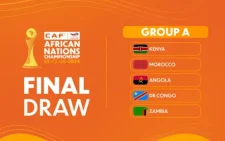Only 20% of aid practitioners have sufficient data to ensure success

Social enterprise Rural Senses announced the launch of Visual Senses – An AI-driven data platform that allows aid practitioners to listen to vulnerable community members at scale, and act based on what they most care about.
The platform enables vulnerable communities and consumers to speak up about their stories and needs. In the background, AI-powered algorithms translate the stories to actionable and customized insights. Companies and nonprofits already use Visual Senses to create sustainable projects and products.
The need is pressing. Accurate and reliable data is at the heart of effective development. While OECD reports $300 Billion of annual investments in developing countries, only 20% of the implementing practitioners have the sufficient data required to successfully meet the needs of the communities they work with.
According to Rural Senses CEO Yau Ben-Or, this is because most projects are still built solely on quantitative data: “Although necessary, quantitative data doesn’t reveal what success looks like for the local communities. Existing tools for the collection and analysis of qualitative data are time-consuming, costly and often introduce biases and ambiguous results.
“As a result, important insights are missed, organisational learning is compromised, and projects’ sustainability is limited. Rural Senses’ mission is to position the priorities of community members early and high in the decision-making process.
“Our goal is to make data available, user-friendly and affordable through the Visual Senses platform. This will allow organizations to design a project in a human-centric way. Stakeholders can then continue to use the platform to ensure the intended impact is delivered” – continues Ben-Or.
“The new platform allows practitioners to get the most actionable insights without spending months on data analysis, and without compromising on data security and ethics”.
“We are happy to see more donors and impact investors that require proof that the target community is involved in the design process. Our platform will allow organizations to engage with the local communities and raise funds more effectively.” concludes Ben-Or.
The Visual Senses dashboard leverages a unique data collection method deemed User Perceived Value (UPV). The UPV was developed by Co-Founder Dr Stephanie Hirmer after 5 years of research at The University of Cambridge.
“The purpose of this unique data collection method is to uncover the benefits of initiatives as understood by local community members themselves, whilst seeking to identify their true wants, values and needs. This really helps when designing a new project, or when seeking to increase adoption. We work with local data collectors ensuring nothing is lost in translation” says Dr Hirmer.











